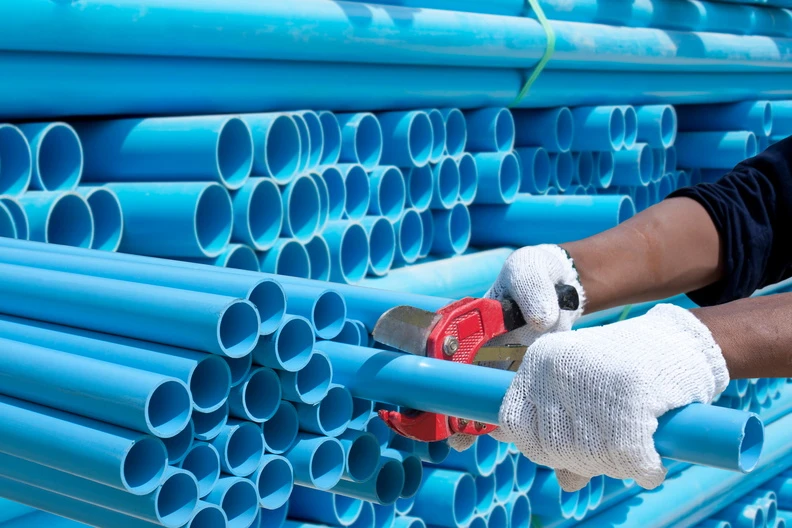Saudi Arabia’s plastic pipes market is on a growth trajectory, driven by the country’s robust economic expansion and an increasing demand for modern infrastructure solutions. Plastic pipes play a crucial role in various applications, from residential plumbing to industrial processes, making them indispensable for the ongoing development of the nation.
Market Drivers
Economic Growth and Infrastructure Development
Saudi Arabia’s Vision 2030 aims to diversify the economy beyond oil and gas, focusing on developing infrastructure, housing, and urban areas. This vision has led to a surge in construction projects, which in turn, has increased the demand for plastic pipes.
Government Initiatives and Regulations
The Saudi government has implemented various regulations and initiatives to promote the use of plastic pipes. Policies that encourage the use of sustainable and efficient materials in construction are driving the adoption of plastic pipes. These regulations are designed to ensure that new infrastructure projects meet high standards of quality and sustainability.
Technological Advancements
Technological advancements in plastic pipe manufacturing have improved product quality and performance. Innovations such as enhanced resin formulations and advanced extrusion processes are making plastic pipes more reliable and versatile. These advancements are attracting more investors and companies to the market.
Market Segmentation

Types of Plastic Pipes
PVC (Polyvinyl Chloride) Pipes
The versatility of PVC makes it a popular choice in the Saudi Arabian market.
HDPE (High-Density Polyethylene) Pipes
CPVC (Chlorinated Polyvinyl Chloride) Pipes
CPVC pipes offer enhanced thermal resistance compared to regular PVC pipes.
Applications
Residential
Their ease of installation and resistance to corrosion make them ideal for home use.
Commercial
Their reliability and low maintenance requirements are key factors driving their adoption in commercial projects.
Industrial
In industrial applications, plastic pipes are used for transporting chemicals, gases, and other materials. The durability and chemical resistance of make them suitable for demanding industrial environments.
Geographical Segmentation
The market is segmented geographically, with major urban areas such as Riyadh, Jeddah, and Dhahran seeing the highest demand for due to ongoing construction and development projects.
Economic and Industrial Impact
Contribution to the Economy
The plastic pipes industry significantly contributes to the Saudi economy by generating revenue and fostering economic growth. The expansion of infrastructure projects creates a ripple effect, benefiting various sectors, including manufacturing and construction.
Job Creation and Industrial Growth
The growth of the market has led to job creation in manufacturing, distribution, and installation sectors. This contributes to the overall industrial growth of the country and supports local economies.
Challenges in the Market
Raw Material Cost Fluctuations
One of the major challenges faced by the industry is the fluctuation in raw material costs. Prices for the materials used to manufactur, such as polyethylene and polyvinyl chloride, can vary significantly, impacting overall production costs.
Environmental Concerns
while durable and cost-effective, have raised environmental concerns due to their non-biodegradable nature. The industry is increasingly focusing on recycling and sustainable practices to address these concerns.
Competition and Market Saturation
As the market grows, competition increases, leading to market saturation in some areas. Companies must innovate and differentiate their products to maintain a competitive edge.
Future Trends and Forecast
Expected Growth Rates
Emerging Technologies and Innovations
These innovations promise to enhance the performance and functionality of plastic pipes.
Market Opportunities and Threats
The market presents numerous opportunities for growth, including expanding into new geographic areas and developing new applications for . However, potential threats such as regulatory changes and economic downturns could impact market dynamics.
Conclusion
Despite facing challenges such as raw material cost fluctuations and environmental concerns, the market’s future looks promising with continued innovation and development.
FAQs
What are the main types of plastic pipes used in Saudi Arabia?
The main types of plastic pipes used in Saudi Arabia are PVC, HDPE, and CPVC. Each type serves different applications based on its properties, such as chemical resistance, flexibility, and thermal performance.
How does the economic growth of Saudi Arabia impact the plastic pipes market?
Economic growth drives infrastructure development, leading to increased demand for plastic pipes. As Saudi Arabia invests in new projects, the need for durable and cost-effective piping solutions rises, benefiting the plastic pipes market.
What challenges are faced by the plastic pipes industry in Saudi Arabia?
Challenges include fluctuations in raw material costs, environmental concerns about plastic waste, and increased competition leading to market saturation. The industry is addressing these issues through innovation and sustainable practices.
What technological advancements are driving the plastic pipes market?
Technological advancements such as improved resin formulations, enhanced extrusion processes, and smart pipe technologies are driving the market. These innovations improve the performance, durability, and functionality of .
What is the future outlook for the Saudi Arabian market?
The future outlook is positive, with expected growth driven by ongoing infrastructure projects, government regulations, and technological advancements. The market is likely to continue expanding, offering new opportunities and challenges for industry players.